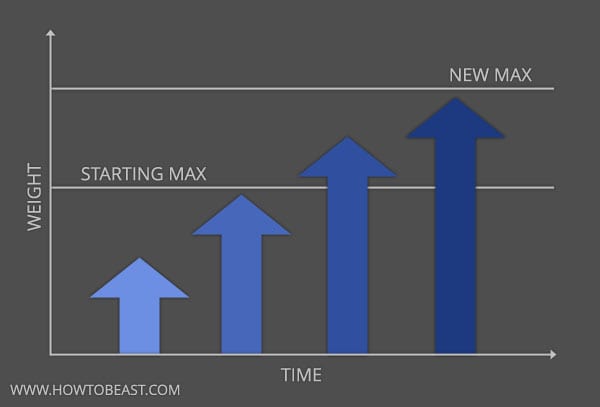


And when you can more reps, then you increase the weight again. You increase the number of reps you can do over time. You figure out an appropriate level of resistance. The Above Process Applies to ALL Exercises and Rep Ranges Your weight increase should drop you back down to the 6-7 rep working range Once you can perform 10 reps with 80lb DBs, you increase the weight by 10-20%. Over the course of multiple workouts, your goal is to do TEN 10 reps with 80lb DBS Next workout, your goal is to do SEVEN reps with 80lb DBs This is your “working set” for this exercise.įor the sake of clarity, lets assume you are doing ONE working set per exercise Let us assume you have accurately estimated your 6 rep max, and that weight is 80lbs (per hand) IF you are an experienced trainee, you should have accurate estimate of your strength levels for every exercise you perform We do this for by first warming up, and then make an estimation. We need determine what our respective SIX rep maximum is on Dumbbell Chest Press. Generally for upper body I suggest 6-10 reps, and lower body I suggest 8-15 reps.įor example, lets us imagine we are doing Flat Dumbbell Chest Press. The most effective method to apply progressive overload is the Double Progression Method. His strength increase was gradual.įinally we get to the portion of the article discussing how Progressive Overload works in an actual workout. This is equivalent to performing the same number of REPS each time you train, but every so slowly increasing the weight.Īnd he did this for FOUR YEARS. He carried it the same DISTANCE every day. Milos carrying of the Bull follows scientific principles of Progressive Overload

While modern bulls can weigh in excess of 2000lbs, in antiquity livestock were MUCH smaller compared to today.Ī bull of that era in Crotonia would have been about 600lbs when fully grown.Ĭonsidering that modern competitive strongmen are capable of Yoke carries with 3x their bodyweight, this is not an impossible feat. At which point there was some form of celebration and the bull was slaughtered and eaten. He would began by carying a newly born calf across his shoulders, along the length of a race track (about 120 meters).īy the time of the Olympiad, the calf would be a fully grown bull.
PROGRESSIVE OVERLOAD EXPLAINED FULL
The most famous legend attributed to him was his carrying of a full grown bull on his shoulders.īetween Olympiads, Milos would gradually peak his strength levels over FOUR years. He was a real person, and won Olympic titles in wrestling 6 times over 24 years.

Milos of Croton was wrestler that lived in the 6th century BC in what is today modern Italy. Or you lift 50lbs 8 times, instead of 40lbs.įor cardio, it means increasing either the speed, distance, or duration at which you are doing an activity.įor example, you can run 1 mile faster than you did last time, or you run for more time (15 minutes instead of 10 minutes) or a greater distance (1.5 miles instead of 1 mile).įor the sake of specificity, lets talk about Progressive Overload as applied to resistance training (lifting weights). Progressive Overload is the Principle of increasing stress over time in order to stimulate further adaptations.įor resistance training (lifting weights), that means you increase the repetitions that you can perform, or increase the amount of weight you are lifting.įor example, you lift 40lbs for 10 repetitions, after lifting it for only 8 in your last workout. Sometimes called the Overload principle, Progressive Overload has been formally defined since the 1950s, but its still largely unknown (and misunderstood) by the general public. And this leads us to the next incarnation of the principle This record was set by Dean Karnazes in 2005. And for the record, the farthest the human body has run without stopping is 350 miles, over 88 hours and 44 minutes.


 0 kommentar(er)
0 kommentar(er)
